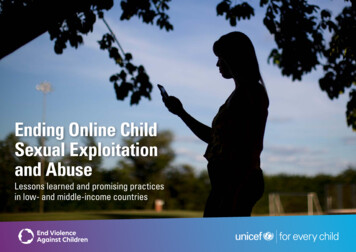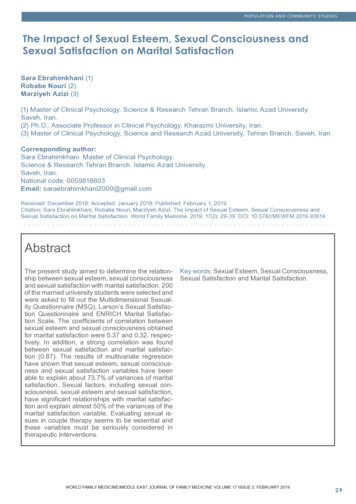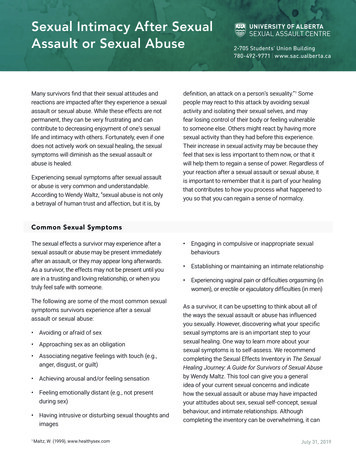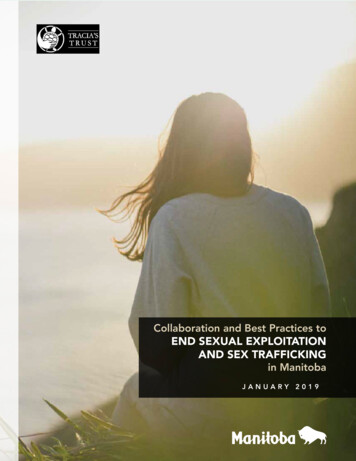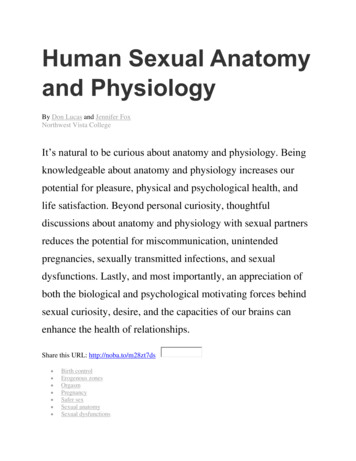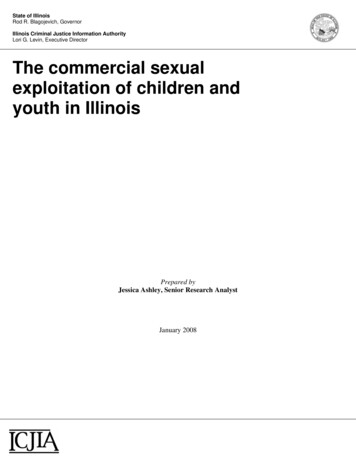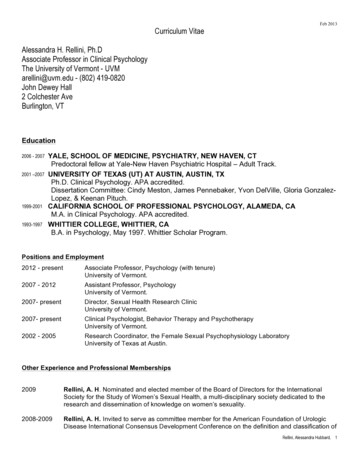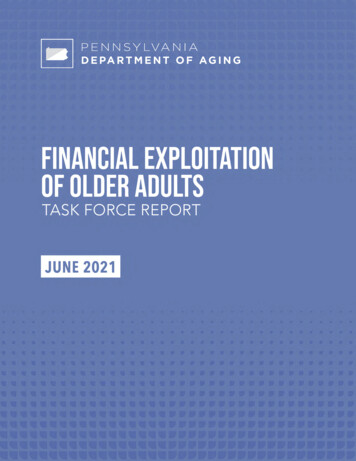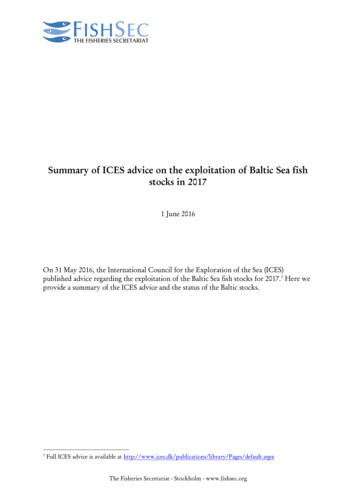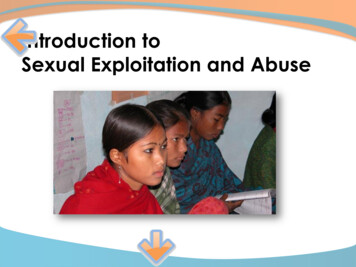
Transcription
Introduction toSexual Exploitation and Abuse
Introduction toSexual Exploitation and Abuse
Introduction to the Course:Background to the IssueThe joint Save the Children UK /UNHCR assessment report onsexual exploitation and abuse(SEA) in West Africa (2002)
Is SEA relevant toDo youmyworkorganization?with people?(click anywhere to indicate “yes”)
IsSEAwerelevanttoYes,need a planDo youmywith people?SEA.organization?toworkaddress(click anywhere to indicate “yes”)
PROPERTIESAllow user to leave interaction:Show ‘Next Slide’ Button:Completion Button Label:AnytimeDon't showNext Slide
By the end of this unit, you will:a) know how to define SEA.b) be aware of the international standardsrelated to SEA.c) understand that these internationalstandards are endorsed by all USNGOs.d) learn the steps that agencies take toaddress SEA.
DEFINING SEA
Sexual abuse is actual or threatenedphysical intrusion of a sexual nature byforce or under unequal or coerciveconditions.
Sexual exploitation is any abuse of aposition of vulnerability, differentialpower, or trust for sexual purposes; thisincludes profiting monetarily, socially,or politically from the sexualexploitation of another.
What is the Difference BetweenSEA and Sexual Harassment? SEA occurs when a position of power (such asbeing a staff member of an NGO) is used forsexual purposes against a beneficiary orvulnerable member of the community. Sexual harassment occurs when differences inpower are abused between staff members(verbally, through touch, use of inappropriateimages, etc.).
INTERNATIONAL FRAMEWORK
Inter-Agency Standing CommitteeSix Core Principles on thePrevention & Response to SEA The IASC is the primary mechanism forinter-agency coordination ofhumanitarian assistance Task Force on Protection from SEA inHumanitarian Crises was set up in 2002
PROPERTIESAllow user to leave interaction:Show ‘Next Slide’ Button:Completion Button Label:AnytimeDon't showNext Slide
InterAction’s PVO Standards InterAction’s Private VoluntaryOrganization (PVO) Standards Section 7.8: Protectionfrom Sexual Exploitationand Abuse inHumanitarian Crises
UN Secretary General’s BulletinThe UN Secretary General’s Bulletin onSpecial Measures for Protection fromSexual Exploitation and Sexual Abuse(October 2003)
ORGANIZATIONAL PROCESSES
PROPERTIESAllow user to leave interaction:Show ‘Next Slide’ Button:Completion Button Label:AnytimeDon't showNext Slide
Code of Conduct A code of conduct is a set ofstandards about behavior that staff ofan organization are obliged to adhereto. A code of conduct outlines theexpected conduct of staff membersand further defines the organization’sdetermination to prevent acts of SEAby its staff.
Code of Conduct Many NGOs created or adapted theircodes of conduct using language fromthe IASC (Inter-AgencyStanding Committee)principles.
Agency Policies & Procedures Code of conductStaff recruitment guidelinesComplaints proceduresInvestigation proceduresVictim assistance policy
Beneficiary Awareness-Raising A complaints procedure is of no use tobeneficiaries if they don’t know that itexists. Beneficiaries need to be madeaware:– what SEA is– what their rights are in regard to SEA– what they can do if SEA occurs
Complaints MechanismProcesses that allowindividuals to reportconcerns such asbreaches oforganizational policies orcodes of conduct.
Investigation of Allegation An investigation policy provides aclear framework that assistsorganizations to conduct quality,confidential, safe, and transparentinvestigations into allegations of staffmisconduct.
Response to InvestigationFindings Dismissal of complaint Non-disciplinary procedures Disciplinary procedures
Responsibility to Report Many agencies have instituted a responsibility toreport for their staff, i.e., all staff members arerequired to report any incidences of SEA thatthey become aware of. Once staff are aware of and understand SEA,mandatory reporting requirementsmay help overcome their fearsof sharing concerns about acolleague.
Next Steps & Resources:Where Do We Go From Here? Internet– InterAction– PSEA Task Force/UN website Groups– IASC PSEA Task Force– InterAction SEA sub-working group Step By Step Guide to Addressing SEA
Remember Humanitarian workers are obliged tocreate and maintain an environmentthat prevents sexual exploitation and abuseand promotes the implementation of theircodes of conduct. Managers at all levelshave particular responsibility to support anddevelop systems that maintain thisenvironment.
PROPERTIESOn passing, 'Finish' button:On failing, 'Finish' button:Allow user to leave quiz:User may view slides after quiz:User may attempt quiz:Goes to Next SlideGoes to Next SlideAt any timeAt any timeUnlimited times
SEA and Sexual Harassment? SEA occurs when a position of power (such as being a staff member of an NGO) is used for sexual purposes against a beneficiary or vulnerable member of the community. Sexual harassment occurs when differences in power are abused between staff members (verbally, through touch, use of inappropriate images, etc.).
